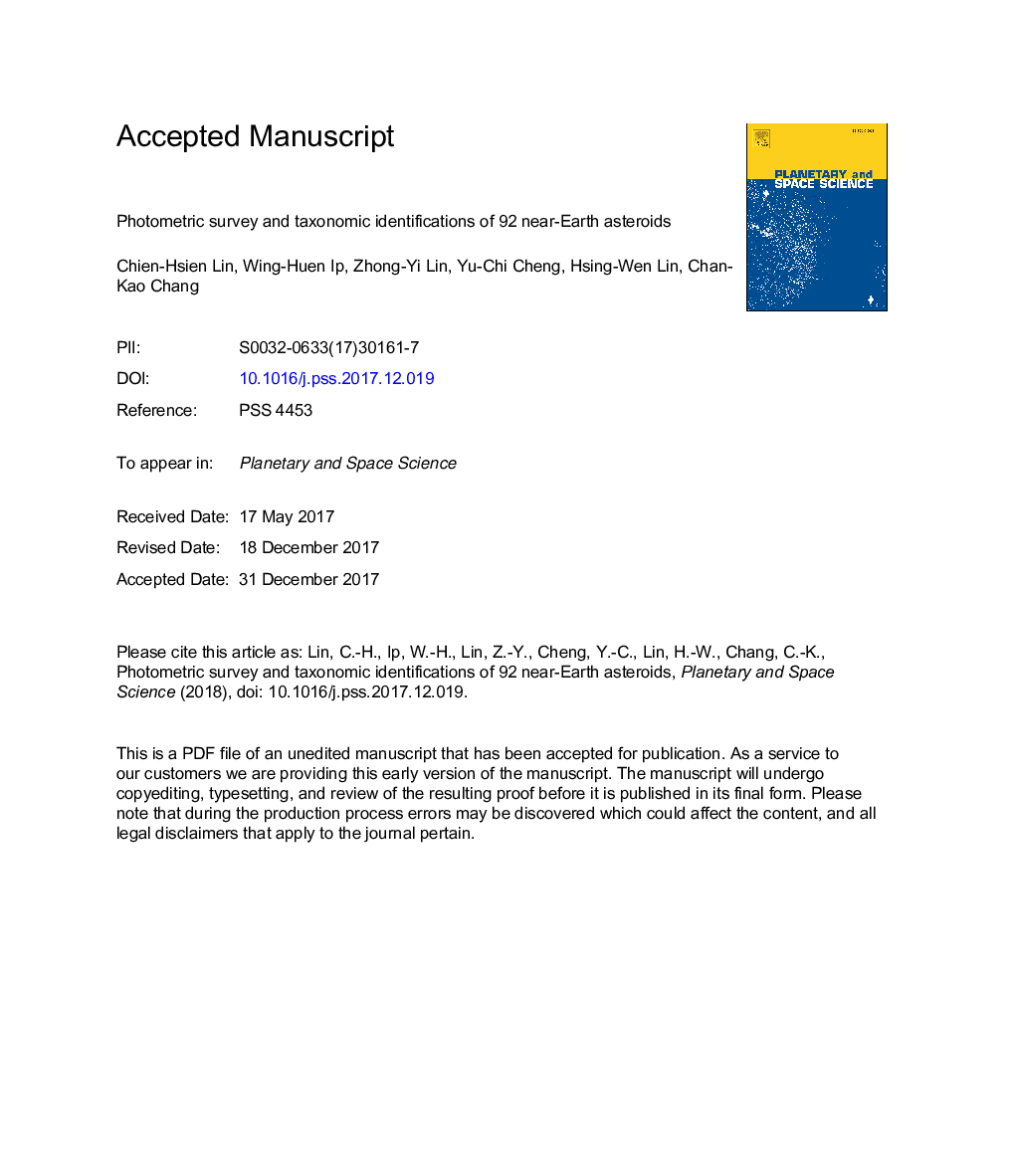| Article ID | Journal | Published Year | Pages | File Type |
|---|---|---|---|---|
| 8142376 | Planetary and Space Science | 2018 | 48 Pages |
Abstract
A photometric survey of near-Earth asteroids (NEAs) was conducted from 2012 through 2014 at Lulin Observatory, Taiwan. The measurements of the color indices, B-V, V-R, and V-I allow the classification of 92 NEAs into seven taxonomic types. Of these samples, 39 of them are new classifications. The fractional abundances of these taxonomic complexes are: A â¼3%, Câ¼6.5%, Dâ¼8%, Qâ¼26%, Sâ¼37%, Vâ¼6.5%, and Xâ¼13%. This result is similar to that of Thomas et al. (2011) even though the populations of the D- and X-complex with low albedos are under-represented. The ratio of the C-cluster to the total population of S + C clusters are 0.22 ± 0.06 for H â¤Â 17.0 and 0.31 ± 0.06 for H > 17.0, indicating a slightly higher fraction of dark-object population with sizes smaller than 1 km.
Related Topics
Physical Sciences and Engineering
Earth and Planetary Sciences
Geophysics
Authors
Chien-Hsien Lin, Wing-Huen Ip, Zhong-Yi Lin, Yu-Chi Cheng, Hsing-Wen Lin, Chan-Kao Chang,
